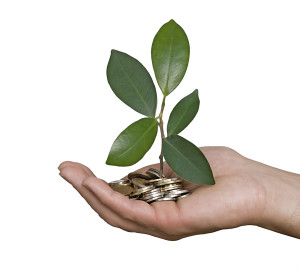March 2016
 A strategic and compelling development framework is needed to address how adequate public and private finance can be mobilized for investment in implementation of the sustainable development goals (SDGs) to address extreme poverty and climate change.
A strategic and compelling development framework is needed to address how adequate public and private finance can be mobilized for investment in implementation of the sustainable development goals (SDGs) to address extreme poverty and climate change.
There is a new buzz-word in the field, ‘climate finance’, which is structurally changing the face of the development agenda and giving rise to how investment is deployed.
The term “climate finance” refers to local, national, and international financing which is used to invest in addressing climate change globally. Pulled from various public, private, or large-scale sources of financing, climate finance is vital for measurable success with the incredible scale of investment that is required for reducing emissions by a sizeable amount, most notably in sectors that require a major overhaul due to their large carbon emissions.
Global actors and institutions are now forced to think outside of conventional development frameworks and seek out disruptive innovation across industry sectors. In September 2011, the UN Secretary General Ban Ki Moon shared his vision for making ‘sustainable energy for all’ a reality by 2030. He launched the Sustainable Energy for All as a global initiative to mobilise action from all sectors of society in support of three interlinked objectives: providing universal access to modern energy services, doubling the rate of improvement in energy efficiency, and, most pertinent to targeting climate change – doubling the share of renewable energy in the global energy mix.
In order to fund climate-change-mitigation, institute adaptation programmes and projects; finance is sourced from public, private and public-private sectors channelled through various intermediaries, notably BFIs (Bilateral Finance Institutions), MFIs (Microfinance Institutions), development cooperation agencies, the United Nations Framework Convention on Climate Change (various funds including those managed by the Global Environment Facility), non-governmental organisations and the private sector.
A number of for-profit commercial data providers, such as Deutsche Bank Research, PointCarbon and Bloomberg NEF, concentrate on tracking and providing information on private sector and carbon market finance flows. According to UNEP and Climate Action, $5.7 trillion in green infrastructure will be needed annually in order to reach a 2-degree Celsius warming scenario. Current investment sits at $360 billion annually, from a variety of sources that end up being equal to approximately 74% of private investors and only 26% of public funds. There is a substantial funding gap in the market and an opportunity for the private sector to come in and commercialise on new clean-technologies, particularly in countries where government funding is scarce.
The other side of climate finance relies on “divesting” or cutting ties with investments that are contrary to the carbon emission reduction. For example, Stanford University decided to divest its $187 endowment fund from coal assets, meaning that the school would refrain from directly investing in the coal or mining industry, and not hold shares in such companies. Stanford’s case does not stand alone as there are large funds in the sector being divested to address climate change which have a substantive impact and encourage responsible spending which further sustainable development and SDG 7.
There is a broad range of development partner activity now underway in support of effective national climate change action in most developing countries. Growing literature presents across both mitigation and adaptation, where the continuum of relevant activity is broad, ranging from support for ‘hard’ adaptation investment to ‘soft’ investments in capacity building for climate resilience and sustainable development. Some activities focus on climate change alone whereas, others on how to climate-proof other development activities. Agenda 2030 has created space for social -entrepreneurial methods across industry sector and development finance which engages multi-stakeholder co-operation and captures an ever-expanding list of activities to achieving the next global development agenda.
Published 2nd March 2016
